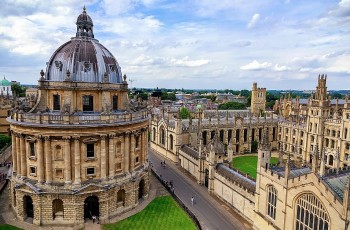What Is the Largest City in the World by Land Area and Population?
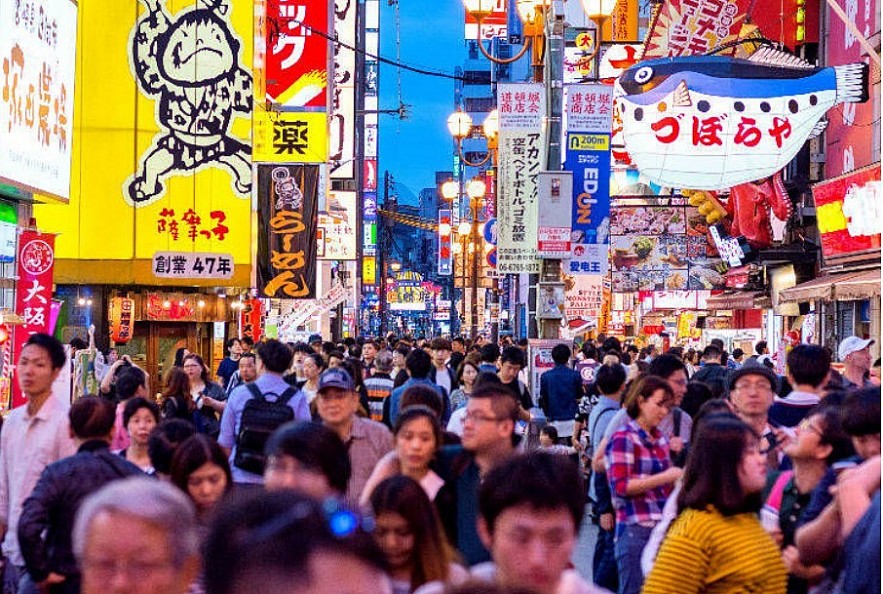 |
| Tokyo - the World's Largest City by Population |
| Contents |
There are over 10,000 cities in the world today, some are capital cities of various countries globally while other are major and minor cities.
What is a City?
The city, one of the world’s biggest phenomenon of the 21st century has evolved greatly over the centuries, particularly in terms of its size, form, structure and composition, while largely maintaining its importance in local and regional development.
In just 65 years, the world has experienced a population shift from rural to urban, as witnessed by an increase in the global population living in urban areas from 29.6% in 1950 to 54% in 2015.
Estimates indicate that at the close of the monitoring period for the sustainable development goals in 2030, 60% of the world population will be urban.
But what exactly is a city or an urban area? What is the size threshold for an area to qualify as a city? What type of administrative, legal or historical status defines a city ? How do we distinguish an urban area from a town or a village?
A study of the city as a unit of analysis is critical to overcoming future challenges and for better positioning of cities as engines of national development. A concrete guidance on definitions, measurements, and unified standards is necessary to make sure that we work with harmonized and mutually agreed concepts. However, these concepts and related monitoring approaches should not aim at changing existing administrative and statistical definitions in countries, but to adopt a functional set of monitoring methods that are pragmatic, cost-effective, simple and accurate. These changes could be made at a ‘supra-national’ level as guiding principles, and related metrics developed that can provide data consistency and serve at the same time as a global and regional platform for comparability.
Today’s diversity of definitions on what constitutes an urban area, multiplicity of official concepts on how to delineate the extent and conditions of cities, and array of measurement techniques, have made it difficult to have internationally validated city-specific data and information needed to define what exactly constitutes progress or lack of it.
The uniqueness of urban form, the fragmented and interstitial fabric of cities, the spatial and functional blur between urban and rural areas, as well as complex growth trends that generate diverse patterns and conditions have made it difficult to delimit city expanses, and coin a single and that is universally applicable definition.
Currently, many diverse definitions exist, which vary between countries and regions. These definitions range from those using a single criteria (e.g population threshold) to those using a mix of criteria (e.g combination of population size, density, administrative delimitation, economic occupation etc).
Equally, the term city is used interchangeably with other concepts such as city proper, urban area, urban agglomeration, metropolitan area, among others, further complicating the process of attaining a single definition.
Defining the largest cities in the world can be tricky as countries can have different definitions of what a city is. What the United States considers a “city” can be very different from what China considers to be a “city.”
Which is the largest city on the planet, this issue is still unresolved.
It's generally thought to be an inhabited place that's more populous than a town or village.
Cities around the world are constantly expanding and developing, so determining the largest city needs to be based on the latest and official statistics.
What is the Most Populated City on Earth?
It is perhaps unsurprising that the majority of the most populous cities in the world are in the two most populated countries in the world, China and India. Among these are Shanghai and Beijing, with populations of 25 and 22 million respectively, Delhi (27 million), and Mumbai (over 21.5 million).
However, Tokyo is the largest city in the world if the entire Tokyo metro area is included, with a total of more than 38 million residents. Another Japanese city, Osaka, also has a very large population of almost 20.5 million. There are also a number of non-Asian cities with high populations, including Mexico City (over 21 million), Cairo (almost 19.5 million), and Buenos Aires (almost 15.5 million).
Of the European cities, Istanbul is the most populous, with more than 14.5 million residents. This is followed by Moscow (over 12 million) and Paris (11 million including the Paris metro area).
According to the latest report of World Population review, Demographia World Urban Areas and UN's World Cities Report, Tokyo is the largest "Megacity" in the world, with a population of more than 37,4 million occupying the metro area (November, 2022).
The Tokyo prefecture, into which Tokyo city was merged, was home to 13,047,446 people in 2010. According to a 2016 estimate of Tokyo's population, the metropolis is now home to 13.5 million people, or 9,262,046 in all of the 23 wards. This does not include the population of the metro area, which we will get into in a moment.
The 23 wards claim a population of 9.2 million, but the metropolis has a population that exceeds 13 million. The greater Tokyo metropolitan area, which is spread over 3 prefectures, is much larger and has a population that is estimated to be over 36 million.
That means the greater Tokyo area is home to 25% of Japan's population, and it's the most populous metropolitan area in the world.
Today, Tokyo houses about 10% of Japan's population. If you include the greater Tokyo metro area of Kanagawa, Saitama, and Chiba, the total population of Tokyo reaches 38 million people! The total population of Japan is about 127 million people, so that’s a whopping 30% - and makes Tokyo the most populous urban area in the world today.
Tokyo has always been Japan's largest city, and one of the mightiest cities in Asia. It used to be known as Edo, and grew from a small village to become, in the 1720s, the first city in Asia with a population of more than 1 million people. Renamed Tokyo in 1868, the city continued to grow rapidly. By 1900, its population had passed 2 million for the first time, and by the start of the 1940s, the wider metropolitan area was home to more than 7 million people.
World War II saw the only major population decline in the city's history. Tokyo's population halved in just five years, and when Japan surrendered in 1945, its population was just 3.5 million. Gradual attrition accounted for much of the decline, although the massive
The population rapidly grew again after the war, perhaps indicating that many of its residents had temporarily left the city.
Top 10 Most Populated Cities in the World in 2022/2023
1.Tokyo (Population: 37,435,191)
2.Delhi (Population: 29,399,141)
3.Shanghai (Population: 26,317,104)
4.Sao Paulo (Population: 21,846,507)
5.Mexico City (Population: 21,671,908)
6.Cairo (Population: 20,484,965)
7.Dhaka (Population: 20,283,552)
8.Mumbai (Population: 20,185,064)
9.Beijing (Population: 20,035,455)
10.Osaka (Population: 19,222,665)
What is the World's Biggest City by Land Area: New York or Sermersooq in Greenland?
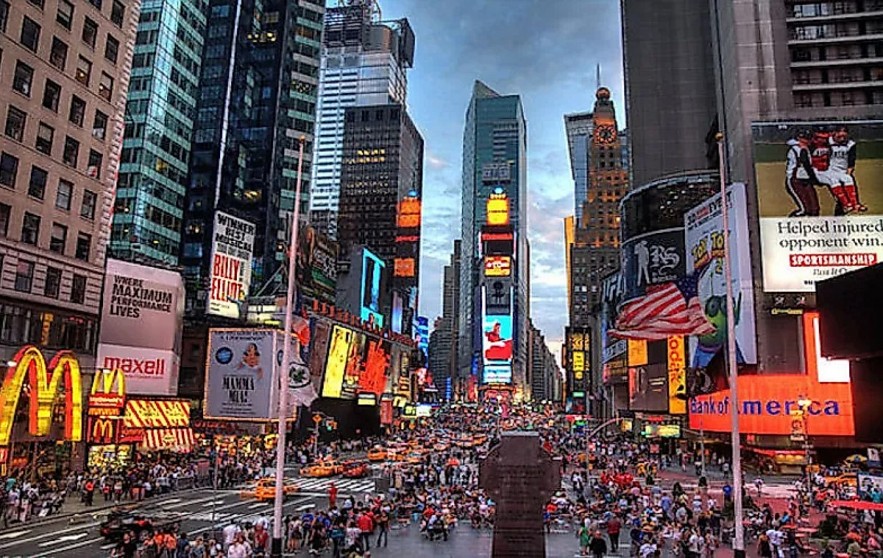 |
| New York - The Largest City by Land Area |
When discussing the world's largest cities, people usually mean population, not area.
Out of all the cities out there, these 10 cities take the first positions respectively as the world’s largest city. By (Km sq) these are currently the world’s largest cities ranked by how big they are by land area.
In 2022, New York led the ranking of the largest built-up urban areas worldwide, with the land area of 12,093 square kilometers. Boston-Providence and Tokyo-Yokohama were the second and third largest megacities globally.
Read More: Top 7 Largest Cities in the World by Land
Top 10 Largest Cities In The World by Land Area 2022/2023
1.New York, NY-NJ-CT, United States - 12,093 km2/ 4,669 mi2
2.Boston-Providence, MA-NH-RI-CT-ME, United States - 9,538 km2/ 3,683 mi2
3.Tokyo-Yokohama - 8,230 km2 / 3,178 mi2
4.Atlanta, GA, United States -7,400 km2/ 2,857 mi2
5.Chicago, IL-IN-WI, United States - 7,006 km2/ 2,705 mi2
6.Los Angeles, CA, United States - 6,351 km2/ 2,452 mi2
7.Moscow, Russia - 4,662 km2/ 2,274 mi2
8.Washington-Baltimore, DC-VA-MD, United States - 5,500 km2/ 2,124 mi2
9.Philadelphia, PA-NJ-DE-MD, United States - 5,430 km2/ 2,096 mi2
10.Dallas-Fort Worth, TX, United States - 5,279 km2/ 2,038 mi2
The two largest cities by area that are not in the U.S. are Tokyo-Yokohama, Japan, and Moscow, Russia. Tokyo-Yokohama is the world’s third-largest city at 8,230 km2 (3,178 mi2), and Moscow is the seventh-largest at 4,662 km2 (2,274 mi2).
Tokyo-Yokohama is the most populous urban area in the world with almost 38 million inhabitants and has a very high population density of 11,950 inhabitants per mi2 and 4,614 per km2.
The Largest City in the World: Sermersooq in Greenland
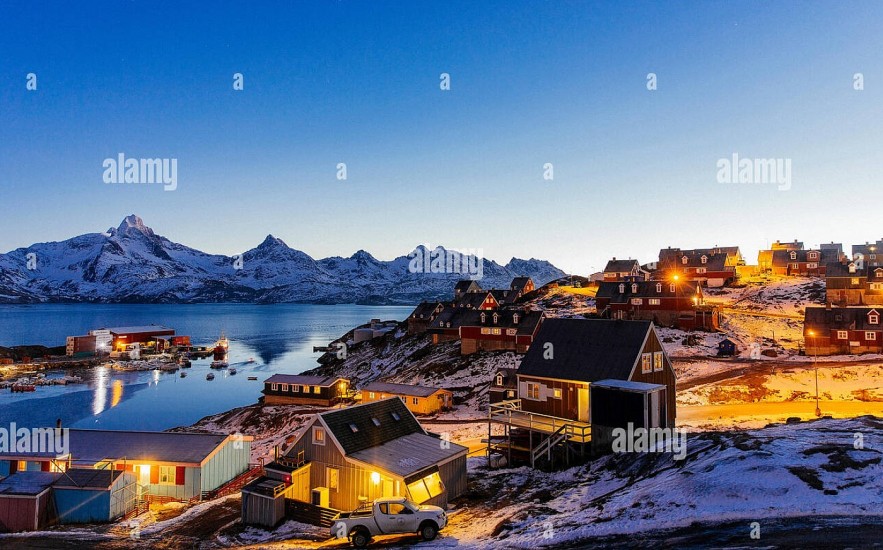 |
| Morning time in Tasiilaq, which is a town in the Sermersooq municipality in southeastern Greenland |
If there is no unified definition of "City", then the largest city in the world is not New York.
The largest city in the world is Sermersooq in Greenland. Sermersooq, formally named Kommuneqarfik Sermersooq, was formed on January 1, 2009, from five smaller municipalities. It spans over 531,900 square kilometers (205,400 square miles) and has a population of just 23,123 people.
The second-largest city in the world is also located in Greenland. Avannaata was formed on January 1, 2018. It encompasses an area of 522,700 square kilometers (201,816 square miles) and has 10,726 inhabitants. Its population density is even less than that of Sermersooq, as 0.02 persons per square kilometer (0.05 persons per square mile).
China has the highest number of the world’s largest cities. The third-, fourth-, fifth-, and sixth-largest cities in the world by area are all located in China: Nagqu, Hulunbuir, Jiuquan, and Shigatse.
Nagqu is a prefecture-level city encompassing 450,537 square kilometers (173,953 square miles) of land and containing 89 townships, 25 towns, and 1,283 villages.
This is followed by Hulunbuir, which has an area of 263,953 square kilometers (101,913 square miles). While Hulunbuir’s population is 2.549 million, most of the city is sparsely populated. The majority of the population resides in the Hailar District. Hulunbuir is mostly a grassy plateau – not what Western cultures consider being a “city.” Despite being a “city,” it is one of China’s most unspoiled pieces of land, with vast wilderness and national forest parks.
The fifth-largest city in the world is Jiuquan, another prefecture-level city located in the Gansu Province of China. Jiuquan spans an area of about 191,342 square kilometers (73,878 square miles) and has a population of 1.095 million, making it more densely populated than the other cities on the list (5.7 persons per square kilometer/15 persons per square mile).
Following Jiuqun is the prefecture-level city of Shigatse, which as an area of 182,000 square kilometers (70,721 square miles). With a population of just over 703,000, the city has a population density of 3.9 persons per kilometer (10 persons per square mile).
 Top 10 US Cities with The Most Beautiful Women Top 10 US Cities with The Most Beautiful Women In this post, let's check out the top 10 US cities to see where you can find the most attractive and beautiful women. |
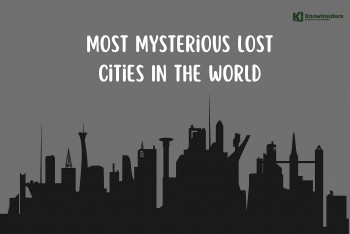 Top 13 Most Mysterious Lost Cities In The World Top 13 Most Mysterious Lost Cities In The World Can you imagine how a city got lost? There are many reasons why a city has to be abandoned. They might be war, natural disasters, ... |
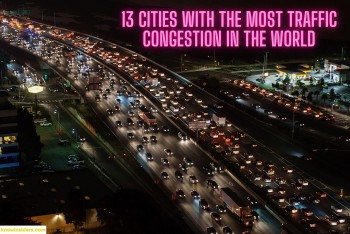 Top 13 Cities With The Most Traffic Congestion In The World Top 13 Cities With The Most Traffic Congestion In The World Which city earns the title of the most congested city in the world? Are you thinking of Bangkok, Dubai or Moscow? Read on the know ... |






















